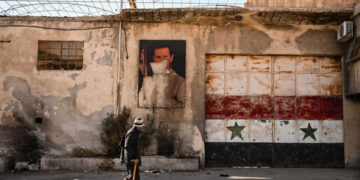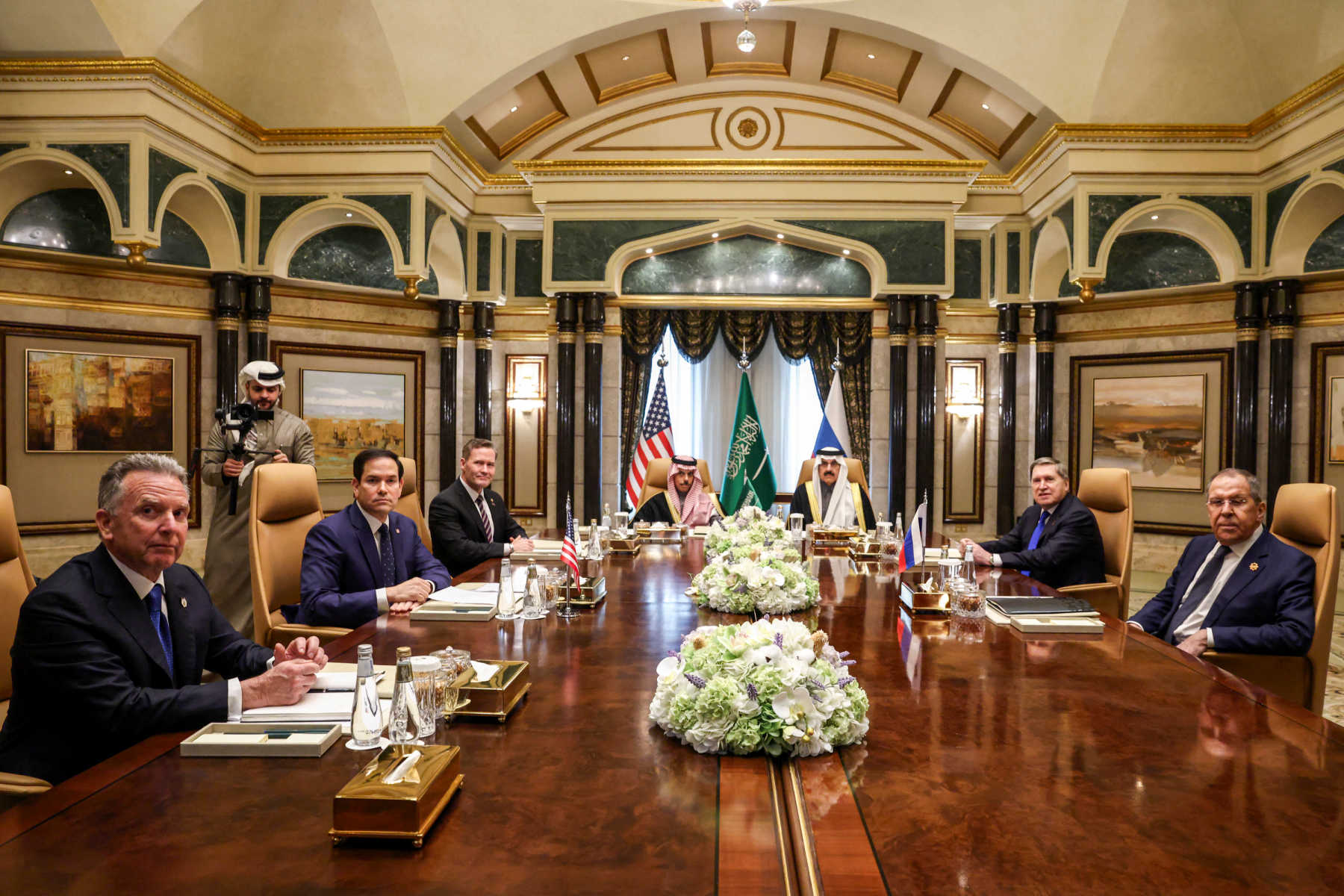Frederick Deknatel is the Executive Editor of Democracy in Exile, the DAWN journal.
When 22-year-old Mahsa Amini was killed in the custody of Iran's notorious "morality police" a year ago, for the crime of not wearing her hijab properly, it quickly set off a revolutionary wave of anti-government protests, led by Iranian women and girls under the banner of a slogan that echoed beyond the country's borders: "Woman, Life, Freedom!" The months of mass demonstrations represented the biggest threat to the legitimacy of Iran's regime since the Islamic Revolution of 1979. The authorities responded brutally, arresting thousands of Iranians and killing at least 500 protesters, including many children and teenagers, and sentencing several demonstrators to public execution.
Last fall, Democracy in Exile convened an expert roundtable to understand what Iran's protests meant for the Arab world, especially women's rights activists in repressive Arab countries. Now, following the one-year anniversary of the death of Amini, who was also known by her Kurdish name, Jina, we are approaching that question again in a new roundtable to find out what has changed in the past year—both in Iran and in the region as the protest movement has been suppressed. We asked experts: What impact have Iran's protests had across the region a year later, both for pro-democracy activists in Arab countries and their repressive governments? Has Iran's repression of its protest movement reverberated beyond its borders?
What happened in the past year in Iran was nothing short of a cultural revolution. This movement has lessons for women and men across the region, and for autocrats and dictators who continue to assert their power over women's bodies and try to control their lives.
- Negar Mortazavi
A Window Into the Lives and Demands of Iranian Women
The eruption of national protests in Iran a year ago, following the death in custody of Mahsa Jina Amini, a 22-year-old Kurdish woman who was arrested by the "morality police" for improper hijab, has provided feminists in the region with a window into the lives and demands of Iranian women. In so doing, it has shattered many of the existing misconceptions about the Iranian women's movement, which is one of the most isolated social movements in the Middle East and North Africa, and possibly the world. Iranian state repression targeting civil society, an economic crisis exacerbated by harsh international sanctions, and the lack of funding to support Iranian women human rights defenders have all conspired to create distance between Iranian women's rights activists and their counterparts regionally and internationally.
Yet over the past year, there has been greater eagerness among feminist movements in the region to engage with Iranian feminists and to learn about their movement and their demands. There is greater desire to express solidarity and stand with Iranian women in their struggle against patriarchy and authoritarian rule. The slogan of the Iranian uprising—"Woman, Life, Freedom," which is rooted in the Kurdish women's movement—has struck a chord with feminists in the region, who not only empathize with it but feel an inspired sense of pride that such a progressive slogan and movement has emerged from their region.
Younger regional activists identify more with the younger generation of Iranian women following the uprisings because they see many of their own demands for bodily autonomy reflected in the protests and struggles of Iranians. As such, younger feminists in the region are more actively reaching out to their Iranian counterparts and including their perspectives in regional events, albeit through online platforms. This increased knowledge, connectedness and solidarity is especially critical given the similarity between the demands and struggles of Iranian feminists and their counterparts in the wider region, especially in the Arab world, but also in Turkey and Afghanistan.
Such solidarity and cooperation are vital as feminist movements, women human rights defenders and their gains on behalf of women come under increasing attack by authoritarian and patriarchal governments. Following the rapprochement between Iran and Saudi Arabia, increased cooperation and solidarity between the Iranian feminist movement and feminists in the Arab world will be key to pushing back to defend civil society and women's rights in both countries.
—Sussan Tahmasebi, a women's rights and civil society activist, is the executive director of FEMENA and a non-resident fellow at DAWN.
*
The Gendered Nature of Authoritarianism
The death of Mahsa Amini last year at the hands of Iran's morality police and the brutal death of Neda Agha-Sultan during Iran's Green Revolution 13 years earlier are part of a greater pattern of violent political repression throughout the Middle East and beyond. When authoritarian regimes are confronted with public protest and social unrest, they respond by violently attacking women. This gendered nature of authoritarian violence is seen as an effective form of social control for two reasons: It aims to render normally patriarchal societies impotent in defense of their female family members and to create a subclass of society in women who are seen as suspect citizens rather than agents of change.
Back on Jan. 18, 2011, 24-year-old Asmaa Mahfouz—one of the founders of Egypt's April 6 Movement—posted a video on YouTube calling on Egyptians to take to Cairo's Tahrir Square on Jan. 25 to reclaim their honor and dignity. Mahfouz's video has been credited with helping spark the Egyptian uprising that ended the 30-year reign of President Hosni Mubarak. The simple chant of "one hand!"—that all Egyptians should unite for a democratic Egypt—was to usher in a new era for women. However, the 18-day uprising has led to nearly 13 years of contentious politics and a new dictatorship under Abdel Fattah al-Sisi for the past decade. The very group instrumental for the uprising's initial success—women—have been marginalized ever since. Tahrir Square had symbolized a space where women were equal with men as the increasingly visible role women played showed that the culture of fear in Egypt toward the state was ending. The state responded with appalling violence toward women, which still reverberates in Egypt under Sisi today.
Similarly, in Saudi Arabia, in December 2020, activist Loujain al-Hathloul, renowned for her leadership in the campaign to legalize women's driving in the country, received a prison sentence of five years and eight months. She was convicted under a sweeping counterterrorism law, with charges that included the sharing of information with foreign diplomats and journalists, as well as efforts to advocate for change within the Saudi system. Since released but living in Saudi Arabia under a travel ban, al-Hathloul has continued to be vocal about the torture she and other women were subjected to in prison for their activism.
The striking parallel between male coercion within patriarchal societies and the authoritarian state's power structure cannot be ignored. In both realms, dissenters are ruthlessly silenced and perpetrators enjoy a disturbing level of impunity. This creates a divisive hierarchy where men are placed above women and the state reigns supreme over all.
This strategy is as old as authoritarianism itself. Dictators are adept at using fear to divide and distract, and so they exploit patriarchy. Since state-gendered violence is an effective tool in ultimate social control, the murders of protesters, activists and women who are symbols of change, like Neda and Mahsa in Iran, will continue as long as authoritarian regimes continue to thrive in the region. It is imperative that the international community recognizes state-gendered violence for what it is: an assault on the core principles of freedom, equality, and human rights, and the key to the endurance of these regimes.
—Dalia Fahmy, an associate professor of political science at Long Island University and a visiting scholar at the Center for the Study of Genocide and Human Rights at Rutgers University, is a non-resident fellow at DAWN.
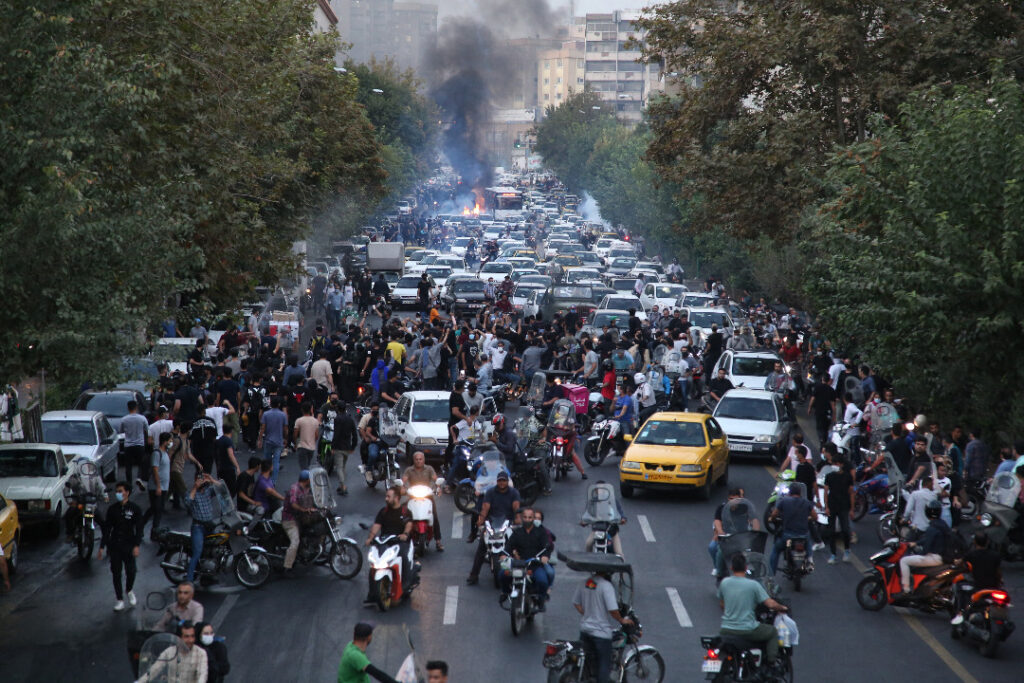
Time Is on the People's Side
It is difficult to know with certainty the regional impact of the 2022 Iranian protest movement. The main reason for this is because these are dark days for the Middle East. Despotic and tyrannical regimes in the region—with critical backing from foreign powers, including the United States—are ascendant while civil society and pro-democracy movements are suffering an unprecedented crackdown. A critical tweet or Facebook post can land you in jail, where you will be subject to torture and a long prison sentence. Given this enveloping repressive context, organizing a focus group in Cairo, Damascus, Riyadh or Amman or polling the people of the region in an open and uncensored way is impossible.
Modern Middle Eastern history teaches us that social movements for political emancipation and self-determination in the Global South do have a wide resonance. If you narrow this to the Arab-Islamic world, the resonance is stronger. Gamal Abdel Nasser, Ahmed Ben Bella, Mohammad Mossadegh, Ahmed Sukarno and Yasser Arafat were widely admired by Arabs and Muslims for their tenacity, independence, political vision and resistance against imperialism and colonialism.
The 1979 Iranian revolution rocked the Arab world. In its early phase, the toppling of the U.S.-backed Shah of Iran was celebrated among revolutionary and democratic forces in the region as a rare moment of political freedom and an opportunity for wide regional political transformation. Ali Shariati, an intellectual architect of the Iranian revolution, was widely read among political activists and intellectuals in the Arab world, notwithstanding his overt use of Shia iconography, symbols and historical references. This fact alone challenges the "ancient sectarian hatred" thesis that allegedly explains tense relations between mainly Shia Iranians and predominantly Sunni Arabs, and has been repeatedly echoed by everyone from Thomas Friedman to Barack Obama.
The great historian of the modern Middle East, Nikki Keddie, once observed that Iran's "Green Movement of 2009 may be considered part of the 2009–2011 revolutionary wave," throughout the region, "but its influence on Arab movements cannot be assumed." Evidence of a direct link between these different parts of the Middle East is sparse. However, when Wael Ghonim, a key organizer of Egypt's 2011 protests, was asked why he wore a green wristband like the supporters of Iran's Green Movement, he replied: "That was just a coincidence, but I'm happy you … made the connection!" He then went on to affirm, "I would tell Iranians to learn from the Egyptians, as we have learned from you … [and] that at the end of the day with the power of people, we can do whatever we want to do." In reflecting on this connection, Keddie has suggested that the general effect of Iranian pro- democracy politics on the Arab world is at best indirect, "showing that the masses of people of varying views could be mobilized even against a strong autocratic government" and the internal politics of regional countries could offer "means of mobilization" that activists from different countries could learn from.
Last year's "Women, Life, Freedom" movement in Iran generated massive global media attention. It was one of the most important human rights stories in years. In a globalized world, it was impossible not to take notice of the Iranian protests and the heroic efforts by Iranian women to push back against the authoritarian system responsible for their subjugation. And while that protest movement has been politically repressed, its ideals live on. From her cell in Tehran's notorious Evin Prison, Narges Mohammadi, a prominent rights activist, wrote this month that the protests have expanded the crisis of legitimacy facing the Islamic Republic and "have weakened the foundations of religious-authoritarian rule." She suggested there will be ongoing waves of protests in the future, which "shows the irreversible nature of the situation," and that overall, these protests have "accelerated the process of realizing democracy, freedom and equality in Iran."
Arab pro-democracy activists can take comfort and find inspiration in these words. The broader point that Mohammadi is making is that the struggle for democracy in Iran and the broader Middle East is not a sprint, but a marathon. Time is on the side of the people, not the dictators that rule over them.
—Nader Hashemi is the director of the Alwaleed Center for Muslim-Christian Understanding and an associate professor of Middle East and Islamic Politics at the Edmund A. Walsh School of Foreign Service at Georgetown University. He is also a non-resident fellow at DAWN.
*
A Cultural Revolution Against the Forces of Patriarchy
It's been a year since the death in custody of Mahsa Jina Amini, a young Kurdish girl from a small town who lost her life because of how she was dressed. What happened in the past year in Iran was nothing short of a cultural revolution.
Jina sparked a feminist uprising across Iran where women and girls of all walks of life showed up for her to say enough is enough, that no woman should lose her life because of how she is dressed. Iranian women and girls have spent a year defying the mandatory hijab that is imposed on them by a repressive state in accordance with a conservative interpretation of the hijab that even some religious scholars disagree with. Women have thrown their scarves into bonfires, showed up in public without the hijab, and signaled to the state that they are not going back to how things were before Jina.
Iranian women have continuously defied the mandatory hijab law over the past four decades, slowly and gradually pushing back the limits set by the state, and gaining more and more autonomy over their bodies and how they dress. If we go back and look at photos of women in Iran in the 1980s and compare them to decades after, we can see the transformation of hijab and how women were able to push the limits and defeat the state with small steps every decade. What happened in the past year would have inevitably happened in the next decades to come, but Jina's death sparked a movement that accelerated it. Women and girls made a giant leap in one year by pushing back the state to a point of no return. They broke a dam that was slowly leaking but still standing. Now the water is flowing through.
The state is trying to put the pieces back together with new laws and regulations, fines and punishments, and threats and intimidation against women who defy the mandatory hijab. But the state's attempt has proven futile in the past year. Images and videos coming out of Iran show how women and girls, not only in Tehran and major cities but even in smaller towns and more religious areas, are showing bravery and courage, dressing as they wish, defying the repressive patriarchal forces that stand on their way, and collectively pushing back in Jina's name.
Women in Iran tell me that it is not always easy to go out in public without the hijab—that they fear arrest, fines, punishment and worse. But every time they see another woman without hijab who is defying the rule they feel more courage to join them. Women tell me that a collective sisterhood has been formed across Iran's public spaces where strangers—women and men—look at those defying the mandatory hijab, smile at them, nod in approval, sometimes even say a word or praise, and show support for each other to continue this fight. This is the most nonviolent, beautiful, feminine form of resistance. To put their lives and bodies on the line, and without saying a word, sends a message that patriarchy no longer owns their body.
This movement has lessons for women and men across the region and throughout the Muslim world, as well as for autocrats and dictators who continue to assert their power over women's bodies and try to control their lives. Iranian women are showing their sisters how they can slowly and quietly resist the forces of patriarchy and push back against the most repressive states with courage and grace. There was a message written on Mahsa Jina Amini's grave that read: "Dear Jina, you will not die. Your name will be a symbol." And that is what has happened. Iranian women and allies continue to say Jina's name, again and again, while chanting "Woman, Life, Freedom.
—Negar Mortazavi is an Iranian journalist, the host of the Iran Podcast, and a senior fellow at Center for International Policy.
The past year of Iranian protests seems less about possible repercussions in neighboring Arab lands, and more about reaffirming this moment of entrenchment by established autocratic elites that collaborate with each other across the Middle East.
- Rami Khouri
A Recurring Pattern of Protest and Repression
The year-long protests that jolted state, government and society in Iran have intensified the convergence in political behavior between Iran and most Arab states. Both Iranian and Arab citizens revolt because they suffer deep political and economic discontent, to which their states respond with more controls and punishments. Using technological surveillance systems from China and Israel, among others, regimes identify and torment more and more individuals who defy their rules, hoping to dissuade others from following suit. But it does not work. The pattern for Arabs and Iranians is clear: Citizens protest, the state ignores, arrests or beats them, but the citizens always resume their protests—fruitlessly for now, but not forever, for the century-long pan-Middle Eastern quest for human rights and dignity will prevail one day soon.
Yet while Iran and Arab states perpetuate this common legacy of battling their own people, they simultaneously pursue radically new policies abroad. Iran negotiated nonstop with the United States and other major powers to revive some version of the 2015 nuclear agreement to ease crippling international sanctions, and also traded prisoner-hostages for its hostage-cash. Iran and Saudi Arabia reconciled, sparking similar dynamics of rapprochement across the region, including by Turkey and Israel. Many key actors forged deeper economic, energy and military ties with Russia and China, and some joined the BRICS.
The last year has confirmed that internal uprisings by Iranians and Arabs alike will not cease, but nor will they succeed in the immediate future, until their relentless, fearless affirmations of liberty and meaningful citizenship triumph over their ruling autocrats. These regimes across the entire region adjust their foreign policies as needed to strengthen themselves and their incumbency, oblivious to their citizens' sentiments, confident that street protests will not budge them. Such policies only buy a bit more time for these economically vulnerable states, whose volatile citizens remain politically neutered and economically ravaged.
The new tensions in the region are not mainly between Arabs and Iranians, whose citizens and states behave remarkably alike. They are between how long the current stubborn autocracies can persist while they intensify domestic controls on their citizens and reverse established foreign policies in order to survive. In this context, the past year of Iranian protests seems less about possible repercussions in neighboring Arab lands, and more about reaffirming this moment of entrenchment by established autocratic elites that collaborate with each other across the Middle East.
—Rami G. Khouri is a distinguished fellow at the Issam Fares Institute for Public Policy and International Affairs at the American University of Beirut and directs the Anthony Shadid Archives Research Project sponsored by AUB's Center for American Studies and Research.
*
Echoes of 1979?
Iran, both as a country and as a regional power, exerts significant influence over the entire Middle East. Therefore, any shifts within Iran directly or indirectly leave a crucial impact on the political, social, and economic dynamics of the region. The reverberations of the 1979 Iranian revolution were felt profoundly throughout the Middle East. Not only did it bring about radical cultural and political changes domestically, but it also helped Iran expand its sphere of influence in countries like Syria, Lebanon, Iraq and Yemen and even influenced the domestic, regional and international relations of Saudi Arabia.
Last year's protests in Iran marked one of the most significant societal changes and developments since the 1979 revolution. The protests forged a renewed identity for many, especially youth and women, centered around popular grievances, women's freedom, societal unity for democratic change, and collaboration among ethnic and religious components that transcended sectarian and ethnic divisions—unprecedented in Iran's modern history. These protests challenged the entrenched patriarchy that has become the state ideology, which is evident in the widespread adoption of the Kurdish slogan, "Jin, Jiyan, Azadi"—"Woman, Life, Freedom"—beyond Iran's borders, and in how the slogan united Iranians inside and outside the country.
These demonstrations laid the groundwork for a nation's reformation, one that challenges the tenets and foundations of the 1979 Islamic revolution. In Iran over the past decade, you can see how people are desperate for political change. The protests also reinvigorated the Iranian opposition in the diaspora, whether those were remnants of the former Shah's political factions, simply the broader Iranian expatriate community, or Kurdish-Iranian opposition parties. While this resurgence didn't solidify a united opposition, it highlighted the importance of a new kind of politics that genuinely represents the Iranian populace, breaking away from the narrow and self-centered perspectives of certain leaders and parties and groups, whether Kurdish, Persian, Azeri and so on.
But the protests also underscored the state's resilience, having secured control over all aspects of governance from intelligence agencies to educational institutions. This dominance poses a formidable challenge for the Iranian populace and future democratic change.
Regarding authoritarian regimes in the wider region, while some displayed an interest in the protests, I think that their primary concern was weakening the Iranian regime rather than genuinely supporting a pro-democracy or feminist revolution. The success of such a movement in Iran could inspire similar uprisings elsewhere in the Middle East, spanning all demographics. As such, one potential reason for the détente between Saudi Arabia and Iran is a mutual realization that both nations need to address their internal issues to stave off the burgeoning demands for democratic reform, especially from women, whose desire for change is unparalleled. Iran is also seeking a security pact with Iraq that marginalizes the Kurdish opposition groups on their border, and it seems the Kurdistan Regional Government in Erbil is following suit.
—Kamal Chomani is a journalist and analyst from the Kurdistan Region of Iraq and a co-founder of the Kurdistan Times. He is currently a Ph.D. student at the University of Leipzig in Germany and a non-resident fellow at the Kurdish Peace Institute.

Cracking Down on Kurdish Groups in Iraq
The Iranian government's response to the 2022 protests extended beyond quelling domestic unrest. It used the opportunity to crack down on Iranian-Kurdish opposition groups located in Iraqi Kurdistan, near the Iraq-Iran border. Iran has attacked these groups in the past, accusing them of launching attacks from Iraq and fomenting instability. Iran also accuses both the federal Iraqi government in Baghdad and the semi-autonomous Kurdish regional government in Erbil of failing to curb the activity of these opposition groups. Moreover, the fact that Jina Mahsa Amini was ethnically Kurdish has given Iranian authorities greater incentive to go after Iranian-Kurdish opposition and to pressure Iraqi authorities to do so as well, a year after protests broke out in Iran.
Since Iraqi Prime Minister Muhammed al-Sudani took office in late October of 2022, the Iranian government has prioritized bolstering security with Iraq on their shared border, in particular in Iraqi Kurdistan. Many meetings have taken place between security officials, and an agreement was reached between Iraqi and Iranian authorities to disarm Iranian-Kurdish groups and relocate them from their bases. The deadline to implement the agreement is Sept. 19, a year and three days after Amini's death.
Over a decade ago, the Iraqi government closed the camps of the exiled Iranian militant group Mujahedin-e Khalq, known as MEK, and forced them to relocate outside of Iraq. However, doing the same now in Iraqi Kurdistan will be more difficult, as evidenced by tensions over the Kurdistan Worker's Party, or PKK, which neighboring Turkey considers a terrorist group. Despite the Turkish military presence in Iraqi Kurdistan and regular attacks on the PKK, the Kurdish militants continue to operate inside Iraqi territory.
—Hamzeh Hadad is a visiting fellow at the European Council on Foreign Relations and an adjunct fellow at the Center for a New American Security.
*
The Reinforcement of Totalitarianism
Regimes are gaining the upper hand. The initial panic of being overthrown, which gripped the ruling classes of the Islamic Republic of Iran during the first spate of the Woman, Life, Freedom protests, has passed. The regime has emerged with even greater confidence that they can bring the masses back into line and keep change-seeking citizens more oppressed through new surveillance technologies, tighter legal strictures and ever-more draconian punishments—immediate, delayed and random to instill fear.
The Islamic Republic's success in responding to public demands for societal reform, and the West's inability to influence trends toward liberalism, have not gone unnoticed by Iran's neighbors. The Taliban have pushed women and children even more out of Afghanistan's public life, and by stripping girls of education, they are ensuring that their extremist, exceedingly-patriarchal interpretation of Sunni Islam prevails despite long-term economic and societal costs in Afghanistan. South of the Persian Gulf, even though rulers of the United Arab Emirates and Saudi Arabia have been quashing displays of Islamic orthopraxis and zealotry they view as counterproductive for economic and social modernization, civil liberties have continued to shrink. Like in Iran, in the Gulf even the most minor of deviations from imperially prescribed behaviors—not just actual challenges to the monarchies but even perceived ones—are being stamped out.
The relaxing of strained relations via diplomatic accords between Sunni Arab nations and Shia Iran may mean that each state will worry less about the instigation of their own populations' protests from the outside. Additionally, their leaders share desires not just of remaining in power but doing so as absolutists. Aided by the rise of individual authoritarians in Russia and China, who are reinforcing the despotic tendencies of Middle Eastern countries while protecting those nations' tyrants, the immediate future of societal change to more representative governments and to more tolerant norms appears far less likely than in 2022.
—Jamsheed K. Choksy is Distinguished Professor and Director of the Inner Asian and Uralic National Resource Center in the Hamilton Lugar School of Global and International Studies at Indiana University.
—Carol E. B. Choksy is Senior Lecturer of Strategic Intelligence in the Luddy School of Informatics, Computing and Engineering at Indiana University.
*
Clouds of Repression
I'm afraid that I have not seen the protests in Iran reflected across the region. Each country appears to have its own grievances, and the general tendency has been toward more authoritarianism—even in places like Tunisia which had seemed relatively "liberated." In fact, intolerance of women and their rights is growing in a number of countries, most obviously in Afghanistan—where the Taliban is obliterating opportunities for half the population and crippling all of society as a result—and even in Israel, where ultra-conservative Jews are demanding that young girls "cover up" on public transportation. There has been some progress in Saudi Arabia in terms of women's participation in the labor force, but that is clouded by continuing repression of any shred of criticism of the ruling crown prince, Mohammed bin Salman. All that said, women in the region continue to push for their rights, and they will never give up.
—Barbara Slavin is a distinguished fellow at the Stimson Center in Washington and a lecturer in international affairs at George Washington University.









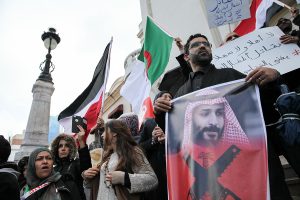
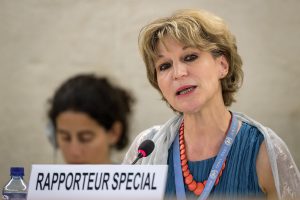

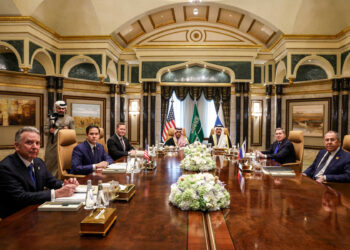


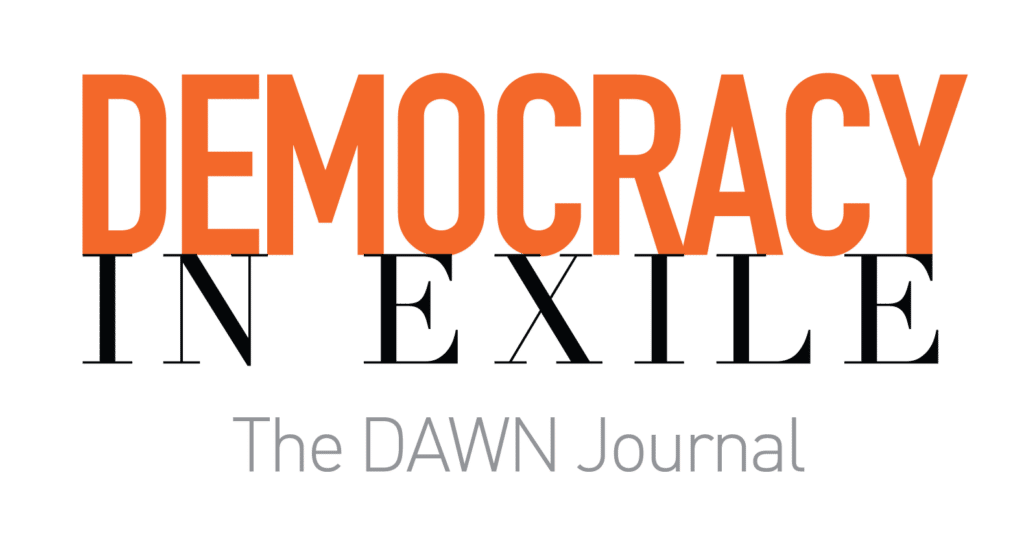

![Security forces loyal to the interim Syrian government stand guard at a checkpoint previously held by supporters of deposed president Bashar al-Assad, in the town of Hmeimim, in the coastal province of Latakia, on March 11, 2025. Syria's new authorities announced on March 10, the end of an operation against loyalists of deposed president Bashar al-Assad, after a war monitor reported more than 1,000 civilians killed in the worst violence since his overthrow. The Syrian Observatory for Human Rights said the overwhelming majority of the 1,068 civilians killed since March 6, were members of the Alawite minority who were executed by the security forces or allied groups. (Photo by OMAR HAJ KADOUR / AFP) / “The erroneous mention[s] appearing in the metadata of this photo by OMAR HAJ KADOUR has been modified in AFP systems in the following manner: [Hmeimim] instead of [Ayn Shiqaq]. Please immediately remove the erroneous mention[s] from all your online services and delete it (them) from your servers. If you have been authorized by AFP to distribute it (them) to third parties, please ensure that the same actions are carried out by them. Failure to promptly comply with these instructions will entail liability on your part for any continued or post notification usage. Therefore we thank you very much for all your attention and prompt action. We are sorry for the inconvenience this notification may cause and remain at your disposal for any further information you may require.”](https://dawnmena.org/wp-content/uploads/2025/04/syria-22039885951-350x250.jpg)


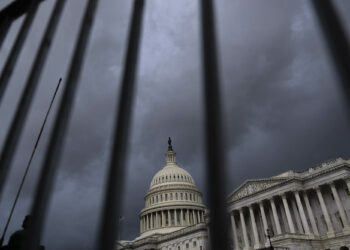





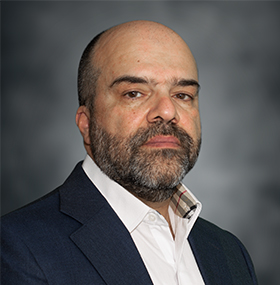


![Security forces loyal to the interim Syrian government stand guard at a checkpoint previously held by supporters of deposed president Bashar al-Assad, in the town of Hmeimim, in the coastal province of Latakia, on March 11, 2025. Syria's new authorities announced on March 10, the end of an operation against loyalists of deposed president Bashar al-Assad, after a war monitor reported more than 1,000 civilians killed in the worst violence since his overthrow. The Syrian Observatory for Human Rights said the overwhelming majority of the 1,068 civilians killed since March 6, were members of the Alawite minority who were executed by the security forces or allied groups. (Photo by OMAR HAJ KADOUR / AFP) / “The erroneous mention[s] appearing in the metadata of this photo by OMAR HAJ KADOUR has been modified in AFP systems in the following manner: [Hmeimim] instead of [Ayn Shiqaq]. Please immediately remove the erroneous mention[s] from all your online services and delete it (them) from your servers. If you have been authorized by AFP to distribute it (them) to third parties, please ensure that the same actions are carried out by them. Failure to promptly comply with these instructions will entail liability on your part for any continued or post notification usage. Therefore we thank you very much for all your attention and prompt action. We are sorry for the inconvenience this notification may cause and remain at your disposal for any further information you may require.”](https://dawnmena.org/wp-content/uploads/2025/04/syria-22039885951-360x180.jpg)
